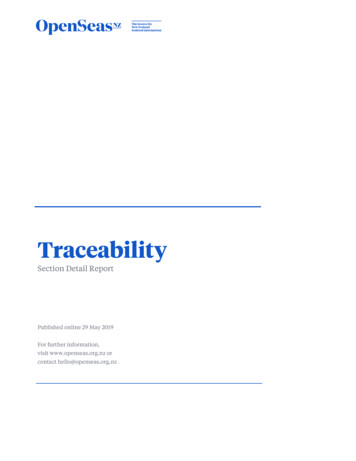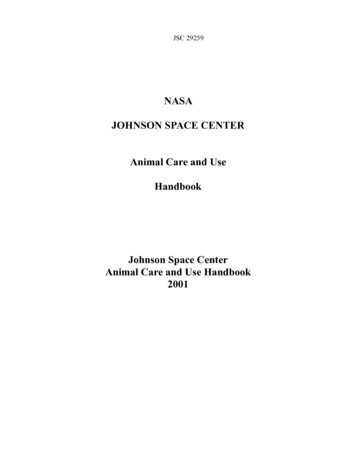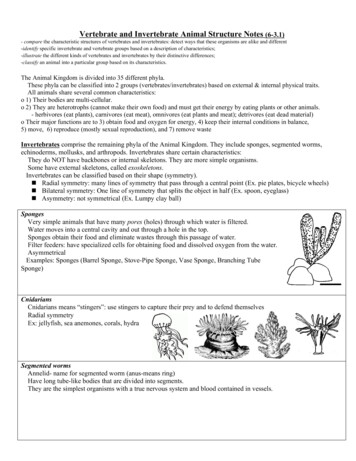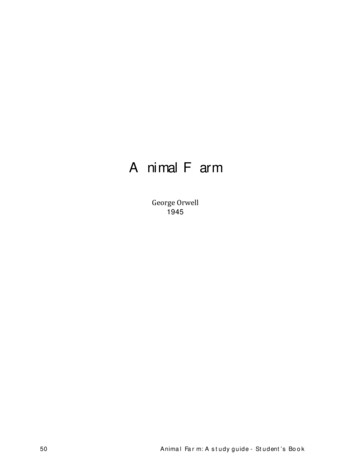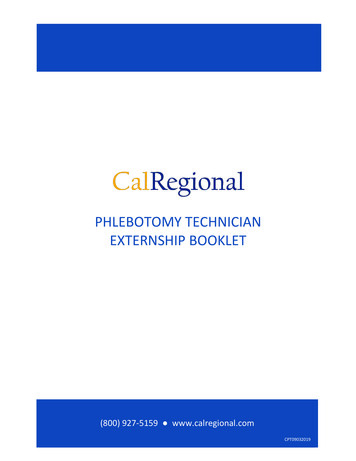
Transcription
DEPARTMENT OF ANIMAL HUSBANDRY,LIVESTOCK, FISHERIES&VETERINARY SERVICESGOVERNMENT OF SIKKIMPIGGERY FARMING
CONTENTSSl. No.TOPICPage No.1.2.3.4.5.IntroductionImportance and AdvantagesCommonly found breeds of pigs in SikkimHousingSchematic layout of 4 unit standard piggeryshedFeedingBreeding cycleCare and management of pregnant sowPreparation for farrowing processFarrowing symptomsCare and management after farrowingCare and management of new born pigletsCare and management of giltsImportant points to be remembered inpiggery farmingCommon disease in pigScheme for establishment of 5 unit pigbreeding farmScheme for establishment of 10 unit pigbreeding farmScheme for establishment of 20 unit pigbreeding farmScheme for establishment of 33 unit pigbreeding farmComparative income statement between agovernment servant and a poultry 27
PIG FARMINGPiggery farming has been recognized as one of the profitableventure among the rural masses.This venture has proved to be one of the most importantlivelihood option. Generally the pigs are reared for pork,considering the increasing trend of pork consumers in Sikkim,Piggery farming will certainly take a industrial form of livelihood inSikkim in future.1
IMPORTANCE AND ADVANTAGES1. In Sikkim and North East region, piggery is one of the important source ofincome.2. Waste food, fruits and vegetables, milk and meat by-products andgrains are easily digested by the pigs to convert them into nutritious pork.3. Pigs usually have a big litter size and the piglets have ability to grow faster,attains maturity early than any domestic mammal. Besides this, a sow hasability to farrow more than twice a year with a litter size of 8-12 piglets.4. Earning is made both from pork and sale of piglets.5. For this, piggery assures opportunity for economic growth among ruralmasses.6. After 8-9 months of weaning, piglets attain maturity and becomes capableof giving birth.7. Under proper care and management pig weighs 80-90 kgs at 6-8 monthsof age.8. Piggery can be done in waste or uncultivable land.9. Piggery is less labour intensive than other animal farming.10. Dressing percentage is more in pig than other animals (65-80%) incomparison to cattle (50-60%) and in sheep and goat (45-50%).11. It also produces high quality manure.2
COMMONLY FOUND BREEDS OF PIGSIN SIKKIM1. Hampshire2. Large Yorkshire3. Large Black4. Saddle Back3
HOUSING(Low - cost shed)(Modern shed)4
DRAWING SHOWING SCHEMATIC LAYOUT OF 4 UNIT (2 ROWS x 2 UNITS)STANDARD PIGGERY SHEDDRAIN 1’6” x 1’6”LEVEL -0’2”FLOOR SLOPEDTOWARDS DRAINLEVEL -0’2”HALF-OPENSHELTERHALF-OPENSHELTER8’ X 7’FEEDWATERTROUGHLEVEL -0’1”LEVEL -0’1”LEVEL 0’1”LEVEL SSAGE1 ’6 ”LEVEL 0’1”LEVEL 0’1”- 0’ 1 ”LEVEL -0’1”FEED LEVEL18”X18” TROUGHWATER3’X1’6”2’6”1’6”FEED WATERTROUGH ELTER8”MANSIONERY WALL4’ HEIGHT4’PASSAGE3’X1’6”TIMBER POSTWATER RHALF-OPENSHELTER8’ X 7’19’6”8’ X 7’LEVEL -0’2”LEVEL -0’2”DRAIN 1’6” x 1’6”ED,NOTE: THIS DRAWINGS INDICATE THE SCHEMATIC LAYOUT NOTABLY THE PLACEMENT OF TH SHNO. OFDRAIN ETC FOR TWO ROW ARRANGEMENT. THE LAYOUT MAY BE ALTERED DEPENDING ON THES SHOWNANITUNGLEISAFOUTOLAYCIBASTHEREAGANIMALS AND THE SITE CONDITIONBUT FOLLOWIN5FLOOR SLOPEDTOWARDS DRAIN1’.6”SECTION2’.6”FOUNDATION TO SUPPORT STRUCTURE (STONE MANSIONERY/ COVEREDSHELTERTIMBER ROOF TRUSS1’6”MANSIONERY WALL4’ HEIGHT4’8’ X 7’
FEEDINGGenerally pig has no definite time for feeding. Piglets are habitualnibblers and eats in small quantity throughout the day.However, pigs are fed twice or thrice a day with the followingcomputed feed:AgeQuantity of feed1-2 months2-3 months3-4 months4-5 months5-6 monthsBoar and Pregnant Gilt0.5 kg / day1.0 kg / day1.25 kgs / day1.5 kgs / day2.0 kgs / day2.5 kgs / dayBesides above, kitchen waste, waste vegetable, fruit, Changwaste and others not fit for human consumption can also befed to pigs mixing with computed feed which may curtail 30-40%of feed cost.231Kitchen wasteChang waste(Chokra)6Vegetables
Cook No 2 and 3 and mix with No 1(1 2 3) together supplements 40% of total feed.Domestic Product (1 2 3) 40%Computed feed 40%Fodder 10 %This way there will be almost 30 - 40% saving in feed cost.7
BREEDING CYCLEIf sow/gilt does not conceive after first mating, it usually comesin heat in another 18-25 days again, the oestrus(heat period) in asow persists for 40-60 hrs.SYMPTOMS OF HEAT:Excitement.Swollen and reddening of vulva.Mounting on other pigs.Restlessness and low intake of feed.White discharge from the genetalia.TIME OF INSEMINATION/ MATING:A gilt or sow should be inseminated or mated with boar within13-20 hrs of manifestation of the symptoms of heat.Segregate the gilt or sow from boar immediately after mating.8
HEATBoarGilt(1st service with boar)Weaning and feeding ofpiglets after 2 monthsof farrowingSecond Challenge heat after21 days(If not conceivedafter first mating)Third Challenge heat after21 days(If not conceivedCare and managementof sow and pigletsafter second mating)Farrowing process after attaining114 3 daysPreparation for farrowingafter 100 days of gestationPregnant Mineral, vitamin, clean water and additional feed9
CARE AND MANAGEMENT OFPREGNANT SOWGestation period of a sow ranges between 114 to 117 days.After mating if the sow does not come to heat in 21- 42 days,it confirms conception.Pregnant sow should be segregated from others.Sow should be fed with quality green fodder along withbalanced diet.Feed should be decreased before 8-10 days of farrowing toreduce abdominal pressure on foetus.10
PREPARATION FORFARROWING PROCESSSegregate sow a week before farrowing.Sow should be provided with bedding of straw, hay and husk.Provision of light, carton and boxes to keep newly born piglets.Scalpel, blade, scissors, potash, iodine, suture (thread), gunnybags, towel, cotton, emergency medicines etc.Make environment conducive and peaceful during farrowing.FARROWING SYMPTOMS:Sow looks anxious and restless before 10-15 hrs of farrowing.Nesting around by dozing on the bedding material with snout.Vulvular swelling and enlargement. Sometimes dripping of milkfrom teats.ARTICLES REQUIRED DURING FARROWING:Clean warm water, scalpel and blade. scissors, suture, towel,gunny bag, tincture iodine, douch can etc.11
CARE AND MANAGEMENTAFTER FARROWINGFarrowing completes within 2 to 6 hrs.Segregate new born piglets immediately after farrowing.After 2-3 hrs of farrowing, sow should be provided with 4-5 kilosof semi-liquid feed.Keep away the piglets from the mother after birth and feed themwith mother’s milk only when it is required to avoid constantirritation the sow.Remove the placenta completely from sow.Uterine flushing with antibiotic solution in sow should be donefor 2-3 days.After flushing the uterus, administer U -bolus or any othersuitable antibiotic intrauterine bolus.12
1. After farrowing is completed the removal of the placentashould be done properly and completely.2. For 2-3 days flush the uterus with antiseptic solutionand administer intrauterine U-bolusor any other suitable antibiotic bolus.Clean waterBedding Semi-liquidlaxative diet Additional feedSow should be fed with plenty of semi-liquid feedand ajjwain etc.13
CARE AND MANAGEMENTOF NEW BORN PIGLET1. Cut the navel cord leaving 2-3 cmsaway from the ligature.3. Iron syrup like Sharkoferolshould be painted on the udderand teats of the mother beforethe piglets are fed.2. Clean the mouth and nostrilsof the piglets for easy breathing.4. Piglet must be fed first mother’s milk or colostrum of thesow till 72 hrs after birth.Special care and attention to begiven to piglets at least for 2 weeks.14After 3 days of farrowing thewolf teeth of the piglets should befiled and made blunt, to avoidinjury to mother’s teats.
CARE AND MANAGEMENTOF GILTSCare and Management is one of the important part of piggeryfarming.Gilts can attain maturity at the age of 6 months under good careand management.Gilt should be mated at the age of 8 months only.Gilt should be segregated from Boar at the age of 6 months.Early mating or mating before maturity reduces the reproductivecapacity of gilts.After weaning the piglets, a sow comes in heat within 3-10 days.The sow which has already given birth once should be fed with3-4 kg of feed one week before it is mated and 3-4 kg after it isconceived.This way proper feeding will increase the potential of a sowgive maximum litter size.15
IMPORTANT POINTS TO BE REMEMBEREDIN PIGGERY FARMING1. A farmer should observe any symptoms to detect illness in pigs.2. Sick animals should be segregated from the herd and kept inseparate room for nursing care and treatment.3. Wash the pig shed, utensils and floor with bactericidal agentroutinely.4. Stunted piglets should be protected from piglet anemia and fedwith iron paste or injected with Iron like Imferon.5. Pigs should be vaccinated with swine fever and F.M.D. Vaccines.6. Do not allow people to come near to pig farm who are exposedto F.M.D. Site.7. Do not allow any outsider within the farm premises.8. Do not allow dogs and birds to enter inside the shed.9. Healthy pigs also need to be inspected twice a day.16
COMMON DISEASES IN PIGSwine FeverSymptomsFever.Inappetance.Staggering Gait/ circling.Death within 1-7 days.Prevention and ControlVaccinate twice a year(February/ August).Foot and Mouth DiseaseSymptoms:Fever.Stringy salivation.Vesicles found in inner cheek,gums, tongue and inter-digitalspace.Lameness due to pain.Prevention And Control:Isolation of sick animal.Contact nearest Veterinary Centre.Vaccinate twice a year i.e. March-April / September-October.17
Mange (Scabies)Symptoms:Pruritis.Scaly and dry skin.Blisters on skin.Prevention and Control:Pigs and the shed both should be kept clean and dry.Worm Infestation:Types of worms:Round worm.Tape worm.Symptoms:Inappetance.Pot bellied.Diarrhoea/constipation.Stunted growth.Rough coat.Prevention and Control:Deworming should be done1at an age of 1-1 /2 months and once every three months.18
Scheme for establishment of 5 unitPig Breeding FarmA. Capital Cost.Sl.No123.ParticularsAmount(in Rs)6,400.00Purchase of 4 Nos. Female Weaner@ Rs 1,600/- each(govt rate)Purchase of 1 No. Male Weaner for Breeding Boar@ Rs1,800/- eachPig Sty. (Housing) Floor space 15’x10’x5 Nos 750sqft@ Rs 250/- te (Grower Ration) for 6 month@ 1.5kg/day/animal 1.5 x 30 x 6 x 5 1,350 kg@ Rs 13/kg.Concentrate (Breeder Ration)2kg x 30days x 6 months x 5pigs 1,800 kgs@ Rs 14/-kgCost for Health Coverage ( L.S.)Insurance Coverage 6.5 % of total purchase cost of parentstockTransportation cost – (L.S.)Total17,550.00B. Recurring Cost (Capitalized).1.2.3.4.5.Total Unit Cost for 5 Unit Pig 00A1,95,700.00BTotal53,283. 002,48,983.00Say Rs 2.48.983.00 (Rupees two lakh forty eight thousand nine hundredeighty three) only.C. Financial ArrangementTotal Project Cost 19Rs 2,48,983.00
Project Operation Statement of 5 unitPig Breeding FarmA. PRODUCTIONSl.No.1.Particulars1st yearPiglets of 50:50 sexratioa) Male Pigletsb) Female Piglets2nd year3rd year4th year64 Nos72 Nos80 Nos80 Nos32 Nos32 Nos36 Nos36 Nos40 Nos40 Nos40 Nos40 NosRs. 57,600.00Rs. 64,800.00Rs. 72,000.00Rs.72,000.00Rs. 51,200.00Rs. 57,000.00Rs. 64,000.00Rs. 64,000.00Rs. 1,860.00Rs. 1,860.00Rs. 1,860.00Rs.Rs. 10,800.00Rs. 10,800.00Rs. 10,800.00Rs. 0Rs1,48,660.00Rs.17,550.00Rs.25,200.00Rs. 2,500.00Rs.533.00Rs. 7,500.00Rs.50,783.00Rs.17,550.00Rs.25,200.00Rs. 2,500.00Rs. 533.00Rs.17,550.00Rs.25,200.00Rs. 2,500.00Rs. 533.00Rs.17,550.00Rs.25,200.00Rs.2,500.00Rs. 533.00Rs.45,783.00Rs.45,783.00Rs.45,783.002nd yearRs.88,877.003rd yearRs. 1,02,877.00B. INCOME GENERATION123.4.Sale proceeds ofMale Piglets@ Rs 1,800/- eachFemale Piglets@ Rs 1,600/- eachGunny Bags Sale@ Rs 20 x 93 bagsComposed manuresale 540 bags@ Rs 20 ( L.S. )Total1,860.00C. EXPENDITUREa.b.c.d.e.Grower RationBreeder RationHealth CoverageInsurance CoverageTransportation CostTotalD. (B-C)Income per annum1st yearRs.70,677.004th yearRs. 1,02,877.00N.B. : Average annual Income ( by calculating mean of net profit of four years) Rs 3,65,308 / 4 years Rs 91,327.0020
Scheme for establishment of 10 unitPig Breeding FarmA.Capital Cost .Sl.No.12.Particulars9 Nos. Female Weaner @ Rs. 1,600/- each1 No. Male Weaner for Breeding Boar @ Rs. 1,800/eachPig Sty (Housing/Floor Space)15ftx10ftx5 nos x2 1,500sqft 3x50ft 150sq.ft(common working space) 1,650sqft @ Rs 250/sqftTotal3.B.Amount(in Rs)14,400.001800.004,12,500.004.28.700.00Recurring Cost (Capitalized )1.2.3.4.5.6.TotalConcentrate (Grower Ration) for 6 months@ 1.5 Kg/day/animal 1.5kg x 30daysx 6 monthsx10 pigs 2,700Kg. @ Rs. 13/Kg.Concentrate (Breeder Ration) 2 kg x 30 days x 6months x 10 pigs 3,600 Kgs.@ Rs. 14/-kgCost for Health Coverage @Rs1000/pigInsurance Coverage 6.5% of total purchase cost ofparent stockTransportation Cost (Lump Sum).Labour Cost -2 Nos. Labour @ Rs. 3000/- X 1 yearTotal Unit Cost for 10 unitPig Breeding 6,746.00Say Rs 6,16,746.00( Rs. six lakh sixteen thousand seven hundred forty six)C.Financial ArrangementProject Cost Rs. 6,16,746.0021
PROJECT OPERATION STATEMENT OF 10 UNITPIG BREEDING FARMA.Sl.No.1.B.1.Particulars3.4.C.D.1st YearPiglet of 50:50 sex ratioa) Male Pigletsb) Female Piglets2nd Year3rd Year4th year144 Nos72 Nos72 Nos162 Nos81 Nos81 Nos180 Nos90 Nos90 Nos198 Nos99 Nos99 00.00Rs 1,78,200.00Rs1,15,200.00Rs1,29,600.00INCOME GENERATIONSale Proceeds of MalePiglets@ Rs. 1800/- each.Female Piglets@ Rs. 1600/- eachGunny Bags Sale@ Rs10Composed manure sale1100 x @ Rs 20Total2.a.b.c.d.e.f.PRODUCTIONRs 1,58,400.00Rs1,740.00Rs1,740.00Rs1,740.00Rs 1,740.00Rs22,000.00Rs 29,740.00Rs 00.00Rs 1,053.00Rs19,493.00Rs 72,000.00Rs 1,88,046.00Rs35,100.00Rs 50,400.00Rs10,000.00Rs1,053.00Rs 72,000.00Rs 1,68,553.00Rs 35,100.00Rs50,400.00Rs10,000.00Rs 1,053.00Rs72,000.00Rs1,68,553.00Rs 35,100.00Rs 50,400.00Rs10,000.00Rs 1053.00Rs 72,000.00Rs 1,68,553.00Rs 80,494.00Rs 1,30,587.00Rs1,61,187.00Rs 1,91,787.00EXPENDITUREGrower RationBreeder RationHealth CoverageInsurance CoverageTransportation CostLabour CostTotalE.(B-C)GROSS PROFITN.B. : Average annual Income ( by calculating mean of net profit of four years) Rs 5,64,055 / 4 years Rs 1,41,103.0022
Scheme for establishment of 20 unitPig Breeding FarmA.Sl.No.12.3.B.1.Capital Cost .Particulars18 Nos. Female Weaner @ Rs. 1,600/- each x 182 No. Male Weaner for Breeding Boar @ Rs. 1800/-eachPig Sty (Housing Floor Space )x10’x10 x2 3,000sqft (3x100 300 working space)@ Rs. 250/- sq.ft.TotalAmount(in Rs)28,800.003,600.0015’8,57,400.00Recurring Cost (Capitalized )Concentrate (Grower Ration) for 6 months@ 1.5 Kg/day/animal 1.5 x 30x 6 x 20 5,400Kg. @ Rs. 13/Kg.2.8,25,000.00Concentrate (Breeder Ration)2kg x 30days x 6months x 20pigs 7,200 Kgs.@ Rs 14/-3.4.Cost for Health Coverage 3% of Project Cost.Insurance Coverage 6.5% of total purchase cost of parent stock5.Transportation Cost (Lump 6.Labour Cost -3 Nos. Labour @ Rs. 3000/X one year.TotalTotal Unit Cost for 20 Sows Breeding Boars10,8000.003,63,186.00A8,57,400.00Say Rs 12,20,686.00( Rs. twelve lakh twenty thousand six hundred eighty six) only.C.Financial ArrangementProject CostRs. 12,20,586.0023
Scheme for establishment of 20 unitPig Breeding FarmA. PRODUCTIONSl.No.1.ParticularsPiglet of 50:50 sexratioa) Male Pigletsb) Female Piglets1st Year2nd Year3rd Year4th year288 Nos324 Nos360 Nos360 Nos144 Nos144 Nos162 Nos162 Nos180 Nos180 Nos180 Nos180 ,000.00Rs 4,500.00Rs 4,500.00Rs 4,500.00Rs 4,500.00Rs 42,000.00Rs 42,000.00Rs 42,000.00Rs 42,000.00Rs5,97,300.00Rs6,58,500.00Rs6,58,500.00B. INCOME GENERATION1.2.3.4.Sale Proceeds ofMale Piglets@ Rs. 1,800/- each.Female Piglets@ Rs. 1,600/- eachGunny Bags Sale 225Nos x @ Rs 20Composed manuresale 2,100 Nos x@ Rs20TotalRs5,36,100.00C. EXPENDITURED.a.b.Grower RationBreeder 00c.d.e.f.Health CoverageInsurance CoverageTransportation CostLabour CostTotalRs30,780.00Rs2,106.00Rs 51,300 46,614.00Rs3,46,614.00(B-C)GROSS PROFITN.B. : Average annual Income ( by calculating mean of net profit of four years) Rs 11,51,556 / 4 years Rs 2,87,889.0024
Scheme for establishment of 33 unitPig Breeding FarmA. Capital Cost.Sl.No1.2.3.ParticularsAmount(in Rs)48,000.005,400.00Purchase of 30 Nos. Female Weaner @ Rs 1,600/- eachPurchase of 3 No. Male Weaner for Breeding Boar@ Rs1,800/- eachPig Sty. (Housing) 15’x10’x15 nosx2 4500sqft 150 x3 150 @ Rs250/ sq.ft.Total12,37,500.0012,90,900.00B. Recurring Cost (Capitalized).1.2.3.4.5.6.Concentrate (Grower Ration) for 6 month@ 1.5kg/day/animal1.5 x 30 x 6 x 30 8,100 kg @ Rs13/kg.Concentrate (Breeder Ration)2kg x 30days x 6 months x 30 pigs 10,800 kgs @ Rs14/kgCost for Health Coverage (Lump Sum)Insurance Coverage 6.5 % of total purchase cost of parentstockTransportation cost (Lump Sum)Unskilled Labour Cost – 2 Nos. @ Rs 3,000/ month X 1year.TotalTotal Unit Cost for 30 Sows 3 Breeding 42.0017,14,242.00Say Rs17,14,242.00 (Rupees seventeen lakh fourteen thousand two hundred forty two ) only.C. Financial Arrangement.Total Project Cost 17,14,242.0025
Project Operation Statementof 33 unit Pig Breeding FarmA. PRODUCTIONSl.No.1.1st yearParticularsPiglets of 50:50 sexratioa) Male Pigletsb) Female Piglets2nd year3rd year4th year432 Nos486 Nos540 Nos540 Nos216 Nos216 Nos243 Nos243 Nos270 Nos270 Nos270 Nos270 0.00B. INCOME GENERATION123.4.Sale proceeds ofMale Piglets@ 1,800/- eachFemale Piglets@ 1,600/- eachSale of Gunny Bags@ 20/- x 234 bagsComposed manuresale 5,940 x@ Rs. 080.001,05,300.00C. EXPENDITUREab.Grower RationBreeder 1,05,300.001,51,200.00c.d.e.f.Health CoverageInsurance CoverageTransportation CostLabour 003,86,428.001,08,000.003,86,428.00D. (B-C)N.B. : Average annual Income ( by calculating mean of net profit of four years) Rs 20,70,290 / 4 years Rs 5,17,57326
COMPARATIVE INCOME STATEMENT BETWEENA GOVERNMENT SERVANT AND A PIGGERY FARMERSl.NoEmployed Lowest GazettedOfficerIncome per AnnumSelf Employed FarmerIncome per Annum1.Rs, 3,67,608/-10 pig unitRs, 1,41,103/-2.Age limit on for 58 yrs.No Age limit.3.Single Employment andTime constraint (10 Am- 4 Pm).Other members of the family canalso be engaged/provideemployment to others.4.Sikkim Government ServiceConduct rule is applicable.Conduct rule not applicable.5.Earning Limited.Earning not limited.6.No other activities likeentrepreneurship for incomegeneration.Can pick up other activitiessimultaneously for added income.2733 pig unitRs 5,17,573/-
9. Piggery is less labour intensive than other animal farming. 10. Dressing percentage is more in pig than other animals (65-80%) in comparison to cattle (50-60%) and in sheep and
